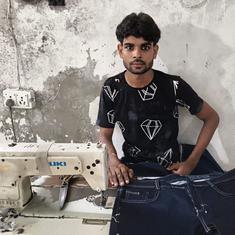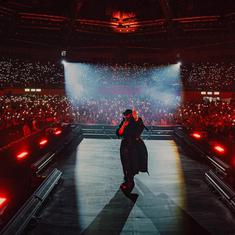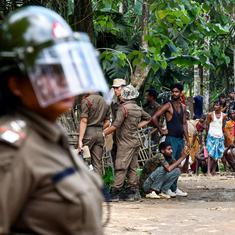On May 15, Portugal’s Museu do Oriente opened the exhibition, Foto Arte Ganesh: Goa, Photography and Memory. Curated by Professor Rosa Maria Perez, senior researcher at Lisbon’s Centre for Research in Anthropology, with assistance by Douglas Santos da Silva, the exhibition focuses on the work of late photographer Krishna Navelcar whose studio once thrived on Rua José Falcão, a bylane of Goa’s capital city, Panjim.
Although Navelcar’s Foto Estúdio Ganesh may now only be a distant memory, what the exhibition reveals is the legacy this Goan photographer created. Navelcar’s career bridged the periods of Portuguese and, then, Indian rule in Goa, spanning the 1950s to the 1980s.
During this time, the photographer captured images in official contexts, including events attended by the last two governors of Portuguese India, Paulo Bénard Guedes and Manuel Vassallo e Silva. Navelcar also documented the 1963 visit of Prime Minister Jawaharlal Nehru to post-Portuguese Goa.
The photographer’s images would appear in local Goan newspapers, but he also worked with radio stations during Goa’s Portuguese and Indian periods. For instance, his pictures show up in the Boletim da Emissora de Goa (a publication of the official radio station in Portuguese India) and he was also employed as a photographer for All India Radio from 1963 until the time of his retirement.
Yet, Navelcar also trained his camera on local goings on of an everyday nature, such as weddings, religious rituals, and festivities. Because of this, the exhibition showcases a varied array of 20th-century Goan history and life.
The photography exhibit, which runs till October 12, also enquires into issues of heritage preservation given the lack of official visual archives in Goa, erstwhile capital of Portuguese India (1510-1961). On June 5-6, a symposium titled Through a Goan Lens: Multidisciplinary Approaches will also be held in conjunction with the exhibition.
In an interview, Perez offers insights into Navelcar’s extensive oeuvre, themes of the exhibition and what it means for his pictures to be on display in Lisbon more than a half-century after the end of Portuguese rule in Goa.
Excerpts:
As a researcher, your scholarship on South Asia has tended toward matters of religious identity, gender, and social relations. How did you first learn about Krishna Navelcar and what connections, if any, did you see between his photographs and your previous research? In turn, what led to the creation of this exhibition?
I would like to clarify that my research interests primarily centre on social structures and issues of discrimination and marginality, rather than on religious identity. While religious identity is an important aspect – particularly in research about the caste system in India – it is more of a subsidiary consideration in my work. On the other hand, I find that women’s studies offers a more appropriate framework for my research than gender studies.
My first encounter with Krishna Navelcar’s brother, the painter Vamona Navelcar, occurred in the mid-1990s, yet I was not introduced to Krishna until I was invited to assess the significance of a substantial collection of negatives – over 15,000 – held by the Fundação Oriente. The extraordinary richness of this photographic archive culminated in the recently inaugurated exhibition following approximately eight years of work with the collection.
As an anthropologist, my interest in photography traces back to the earliest figures in the field, notably Margaret Mead, who incorporated it into their research. I have been captivated by the interplay between photography and anthropology for many years, particularly as contemporary anthropologists have begun to systematically investigate this relationship, moving away from an earlier focus on colonial photography.
Although I have not regarded myself as sufficiently specialised to write extensively on photography, I am now considering further research based on collections of Goan photographers currently preserved in Portugal. It is also worth noting that I have been teaching visual anthropology for many years – initially with Professor Lina Fruzzetti at Brown University, and more recently through a course I developed at the Indian Institute of Technology (Gandhinagar), titled Anthropology of Visual Systems, with a core approach to photography. I have also supervised theses on photography and film.

In your curatorial note to the exhibition, you remark that Navelcar’s photographs open up “a more complex narrative of Goan history”. You suggest that these images may challenge colonial conceptions of the region, which is notable given that Navelcar often functioned in an official capacity, commissioned as he was by state agencies to document various events in what was then the capital of Portuguese India. What can you tell readers about Navelcar’s official work and how do you foresee the exhibition offering new ways of thinking about the past as Navelcar chronicled it?
Krishna Navelcar’s official photography, commissioned by state agencies in the former capital of Portuguese India, transcends merely reflecting the colonial perspective or serving as a passive tool of the state.
Instead, his extensive collection of photographs offers a comprehensive view of nearly 40 years of Goan history, covering the end of Portuguese rule and the social and political changes that shaped modern Goa. Navelcar documented state events and public ceremonies, but he also captured everyday life, showcasing the diversity and resilience of the Goan people.

His photographs depict lively celebrations, everyday street scenes, and moments of transformation, often emphasising the region’s rich religious and social diversity. In doing so, Navelcar’s images challenge the narrow views often present in colonial documentation, which tried to define Goan identity in limited ways.
They prompt us to reflect on how official photography can both support and challenge mainstream historical narratives, and invite us to recognise Navelcar not just as an official chronicler but also as a witness to and participant in the formation of Goan memory. In summary, while Navelcar's official role could have restricted him to reproducing colonial viewpoints, the depth and variety of his work adds complexity and richness to the narrative of Goan history.

Of your own process in selecting images for the exhibition, you muse upon how Navelcar’s pictures show an “intricate interplay between [himself as] photographer and [his] subject [that] underscores the significance of every detail … [These features] are all captured in time, transforming an ordinary photograph into a powerful testament of human connection and emotion”.
As visitors to the exhibition take in the display, what might they glean of Navelcar between him doing his official job as a commissioned photographer and his own expression of personal and artistic agency?
It would be a significant oversimplification to restrict a collection of over 15,000 negatives – especially since this collection does not represent the entirety of Navelcar’s work, with many additional negatives held by his daughter – to merely his role as a commissioned photographer.
The exhibition showcases images selected from thousands of portraits, street scenes, and photographs capturing everyday life. These images clearly extend beyond the scope of his commissioned work, both before and after the end of colonial administration. This broader visual record highlights Navelcar’s engagement with Goan society in all its complexity, countering any attempt to diminish his legacy to that of mere official documentation.

With regard to your second question, every commissioned photograph of individuals represents a complex negotiation among the expectations of the commissioner, the creative vision of the photographer, and the agency of the subject.
This is particularly evident in portraits or images of people, where the resulting photograph transcends a mere reproduction of the commissioner’s intent, emerging instead from a dynamic interplay between the photographer and the subject. While the photographer operates within the frameworks established by the client or agency, they also infuse their unique perspective, aesthetic choices, and ethical considerations into the process. Subjects may pose, resist, or collaborate, influencing their representation both consciously and unconsciously. Their expressions, body language, and willingness to engage play crucial roles in shaping the final image, highlighting the photograph as a product of interaction rather than a one-sided endeavour.
Even within a brief or formal assignment, the photographer interprets the scene through decisions regarding framing, timing, and focus. These choices can subtly or overtly challenge, nuance, or reinforce the intended message. Although the commissioner outlines the broad purpose and context, it is the photographer who negotiates the particulars: the approach to the subject, what to include or exclude, and how to respond to the subject’s reactions.
This negotiation is especially critical in ethnographic contexts, where sensitivity to the subject’s dignity and agency is of utmost importance. Such negotiations underscore that even official or commissioned photographs are the result of dialogue, not a unilateral process.

An important fact is that Krishna Navelcar named his studio for his late brother Ganesh, who died very young. Ganesh was also the name with which the artist Vamona Navelcar (1929-2021), another of the photographer’s brothers, would sign his canvases, also as an homage to his late sibling. Both Krishna and Vamona were in the employ of the colonial state, the former in Portuguese Goa and the latter in Portuguese Mozambique. Despite the geographic distance, the brothers shared a close bond. What might we make of the emotional and political entanglements in the lives of these artistic brothers?
No one is better positioned than you to address this question, given your extensive and profound scholarship on the work of Vamona Navelcar – partly in collaboration with Vishvesh Kandolkar. My own response would likely reflect much of what you have already written, the lectures you have delivered, and the exhibition you curated. Nevertheless, I will attempt to provide a reply.
Both brothers navigated careers within colonial state structures, yet their creative output consistently reflected a deep engagement with issues of identity and belonging. By honoring their brother through their professional identities, they engaged in a subtle form of resistance against erasure and marginalisation, thereby asserting a familial and cultural memory within the frameworks of colonial modernity.
Politically, their lives exemplify the paradoxes experienced by colonised individuals who contributed to official cultural production while simultaneously cultivating spaces for personal and collective meaning. The emotional bond between the brothers, maintained across continents and colonial boundaries, underscores how affective ties can both enhance and complicate artistic agency. Their shared tribute to Ganesh serves as a site where personal grief, cultural symbolism, and the politics of memory converge, challenging the oversimplified narratives often imposed by colonial and postcolonial histories.
At present, there is no official repository of visual culture and history in Goa. As your curational essay explains, “The evident lack of visibility of photographers’ collections in Goa has resulted in a significant deficiency of systematic studies on photography in the region.” Apart from the intellectual challenges that arise due to this unarchived photographic history, what is lost culturally and artistically by not having a permanent collection of such photographs in Goa? In this regard, what intervention can an event like Foto Arte Ganesh offer and are there any plans to bring the exhibition “back” to Goa?
Without these visual records, the lived experiences, social transformations, and diverse identities that have shaped Goa could be forgotten or reduced to official or externally constructed narratives. The absence of a permanent photographic archive leaves Goa’s cultural identity vulnerable to erasure, oversimplification, and external definitions, rather than allowing it to be continually reimagined and affirmed by Goans themselves.
The exhibition aims at doing more than simply showcasing images; it revitalises collective memory, confronts historical amnesia, and honors the people and diversity of Goa. By presenting these photographs in a curated public setting, Foto Arte Ganesh not only fills a gap in the historical record but also encourages new avenues of dialogue, research, and artistic expression, fostering a shared sense of heritage and belonging.
Looking ahead, as a curator I recognise the essential need to diplay exhibitions like Foto Arte Ganesh in Goa that would restore a significant visual history to its rightful place and act as a catalyst for further archival initiatives, public engagement, and the potential development of a permanent photographic collection. This endeavor would mark a meaningful step toward addressing the historical importance of Goan photographic heritage and promoting continued cultural and artistic renewal.
In conclusion, I want to emphasise that my role in this exhibition and its catalogue is not doctrinal and definitely not patronising. The work I have done is the result of over 30 years of “observing” Goa, an endless source of inspiration, shaped by its artists, researchers, and creators. I view myself as a vessel through which this inspiration has flowed. Ultimately, this work rightfully belongs to Goa and to the Goan people.
R Benedito Ferrão is an Assistant Professor of English and Asian & Pacific Islander American Studies at William & Mary, Virginia, USA and its recipient of the Jinlan Liu Prize for Faculty Research.










